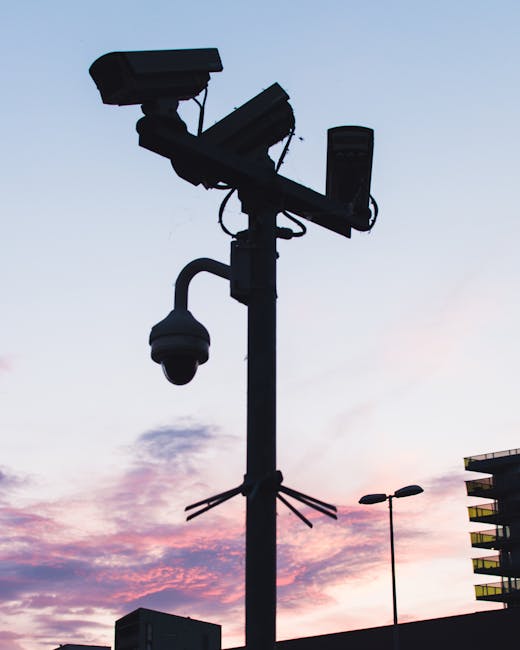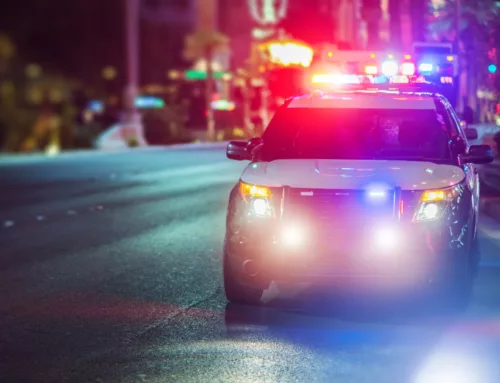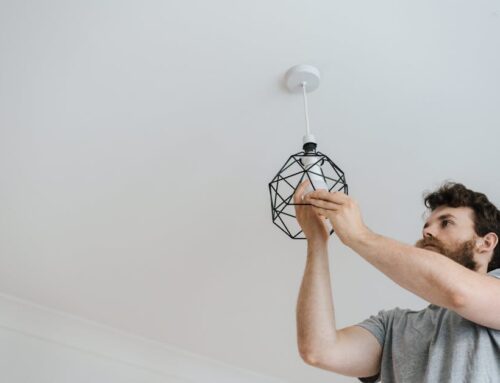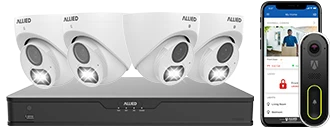- Understanding Surveillance Camera Technology
- Assessing Your Home’s Security Needs
- Types of Surveillance Cameras Available in the Market
- Key Features to Consider When Choosing a Surveillance Camera
- Legal and Ethical Considerations in San Antonio
- Installation and Maintenance of Surveillance Cameras
- Budgeting for Surveillance Camera Systems
- Choosing a Reliable Vendor in San Antonio
Understanding Surveillance Camera Technology
Surveillance camera technology has evolved significantly in recent years, offering homeowners a variety of options to enhance their security. Understanding the core components and functionalities of these systems is crucial for making an informed decision.
Camera Resolution
One of the most important aspects of surveillance cameras is their resolution. Higher resolution cameras, such as those with 1080p or 4K capabilities, provide clearer and more detailed images, making it easier to identify faces and other important details. Lower resolution cameras, like those with 720p, may be sufficient for general surveillance but may not provide the same level of detail.
Field of View
The field of view (FOV) refers to the area a camera can cover. Cameras with wider FOVs can monitor larger areas, which can reduce the number of cameras needed for comprehensive coverage. For example, a camera with a 90-degree FOV will cover a smaller area than one with a 180-degree FOV.
Night Vision
Many surveillance cameras are equipped with infrared (IR) LEDs that allow for night vision capabilities. This feature enables the camera to capture clear footage even in low-light or completely dark conditions. The efficacy of night vision varies among cameras, typically determined by the number of IR LEDs and the technology used.
Connectivity Types
- Wired Cameras: These cameras are connected to a recording device or monitor via coaxial or Ethernet cables. Wired connections offer stable and uninterrupted data transmission but may require professional installation.
- Wireless Cameras: These connect to the home network using Wi-Fi. They are easier to install than wired cameras but may suffer from interference or signal loss, especially if the network is not strong enough.
Storage Solutions
Storage is a critical consideration for surveillance systems. There are several options for storing footage:
- Local Storage: This includes using SD cards within the cameras or digital video recorders (DVRs) and network video recorders (NVRs). Local storage ensures that your footage is kept within your premises.
- Cloud Storage: Some cameras offer cloud storage services, allowing footage to be stored offsite. This can provide additional security against tampering or physical damage to the storage medium.
Power Supply
The power supply for surveillance cameras can vary:
- AC Power: Many cameras require connection to an AC power outlet.
- Battery-powered: Some cameras use batteries, which can provide flexibility in installation but require periodic recharging or replacement.
Smart Features
Modern surveillance cameras often come with smart features that enhance their functionality:
- Motion Detection: Cameras with motion detection can alert homeowners to movement within their field of view.
- Two-way Audio: Some cameras allow for communication via built-in speakers and microphones, useful for interacting with visitors or deterring intruders.
- Integration with Smart Home Systems: Many new cameras can integrate with home automation systems, providing greater control and functionality.
By understanding these fundamental aspects of surveillance camera technology, homeowners can better assess which systems will meet their specific security needs.
Assessing Your Home’s Security Needs
When it comes to selecting the best surveillance cameras, assessing your home’s specific security needs is a crucial first step. San Antonio, like any other city, has unique characteristics that can influence the type and placement of surveillance systems.
Assessing Vulnerable Areas
Identify the most vulnerable points of your home. These typically include entrances, windows, and other points of entry. Consider the following spots:
- Front and back doors
- First-floor windows
- Garage doors
- Driveways and walkways
Understanding Crime Rates and Patterns
Crime data can be invaluable when evaluating your security needs. The San Antonio Police Department provides crime statistics that can help you understand the prevalence of certain types of crimes in your neighborhood.
| Crime Type | Incident Rate in San Antonio (per 100,000 people) |
|---|---|
| Burglary | 850 |
| Theft | 3,000 |
| Motor Vehicle Theft | 500 |
Environmental Considerations
San Antonio’s climate and environmental conditions should also be considered. Surveillance cameras should be able to withstand high temperatures, humidity, and occasionally severe weather. Cameras with features such as weatherproof casings and night vision capabilities can be particularly beneficial.
Connectivity and Infrastructure
Evaluate the existing infrastructure of your home. Consider whether you have strong Wi-Fi coverage throughout your property if you are opting for wireless cameras. Additionally, ensure that there is adequate power supply for wired cameras.
Assessing Personal Privacy
Ensure that the installation of surveillance cameras respects the privacy of your family and neighbors. Point cameras away from bedrooms and other private areas, and be mindful of local regulations regarding surveillance.
By carefully assessing your home’s security needs in these areas, you can make a well-informed decision when selecting surveillance cameras that provide the best coverage and protection for your property in San Antonio.
Types of Surveillance Cameras Available in the Market
When selecting surveillance cameras for your home in San Antonio, it is crucial to understand the various types of cameras available in the market. This chapter provides an overview of the primary types of surveillance cameras you might consider.
1. Dome Cameras
Dome cameras are named for their dome-shaped housing. They are a popular choice for both indoor and outdoor surveillance due to their unobtrusive design. Their structure makes it difficult to determine the direction the camera is pointing.
- Advantages: Vandal-resistant, 360-degree coverage, suitable for various environments.
- Disadvantages: Installation can be more complicated compared to other types.
2. Bullet Cameras
Bullet cameras, also known as “lipstick cameras,” are characterized by their long, cylindrical shape. They are generally used for outdoor applications and to cover long distances.
- Advantages: Easy to install, highly visible deterrent, excellent for long-distance viewing.
- Disadvantages: More susceptible to tampering due to their conspicuous design.
3. PTZ Cameras
PTZ (Pan-Tilt-Zoom) cameras offer the ability to pan left and right, tilt up and down, and zoom in and out. These cameras are beneficial for actively monitored systems where adjusting the camera’s position can provide comprehensive coverage.
- Advantages: Versatile coverage, remote control, high zoom capabilities.
- Disadvantages: Higher cost, requires active monitoring for optimal use.
4. Indoor Cameras
Indoor cameras are designed for monitoring the inside of your home. They can be placed in various locations such as living rooms, hallways, and entrances to keep an eye on activities inside the house.
- Advantages: Specifically designed for indoor environments, often aesthetically pleasing, can integrate with home automation systems.
- Disadvantages: Ineffective for outdoor surveillance.
5. Outdoor Cameras
Outdoor cameras are built to withstand weather conditions and are commonly used for monitoring the perimeter of a home. These cameras are typically more durable and have features such as waterproofing and vandal resistance.
- Advantages: Durable, weather-resistant, often equipped with infrared capabilities for night vision.
- Disadvantages: Can be more expensive, installation may require additional considerations.
6. Wireless Cameras
Wireless cameras offer the flexibility of not being tethered by wires, making them easier to install and relocate as needed. These cameras transmit data wirelessly to a receiver or cloud storage.
- Advantages: Flexible installation, easier to relocate, can integrate with smart home systems.
- Disadvantages: May require frequent battery replacements, potential for signal interference.
7. Wired Cameras
Wired cameras are connected by cables directly to a recording device, often ensuring a more stable connection compared to wireless options. These are typically used in permanent installations where a reliable connection is critical.
- Advantages: Stable connection, no interference, often with higher quality video transmission.
- Disadvantages: More complex installation, less flexibility to relocate once installed.
Understanding these types of surveillance cameras will help you make an informed decision when choosing the best system for your home in San Antonio. Each type has its own set of unique features and suitable applications, so consider your specific needs when evaluating these options.
Key Features to Consider When Choosing a Surveillance Camera
When choosing a surveillance camera for your home in San Antonio, several key features should be carefully evaluated. These features will determine the camera’s functionality, efficiency, and suitability for your specific security needs.
Resolution: The quality of the footage is determined by the camera’s resolution. Higher resolutions, such as 1080p Full HD or 4K Ultra HD, provide clearer,
more detailed images, which are crucial for identifying faces or license plates.
Field of View: This refers to the width of the area that the camera can capture. A wider field of view reduces the number of cameras needed to cover a large area, making it a cost-effective option.
Low-Light or Night Vision: Cameras equipped with infrared (IR) LEDs or low-light technology can capture clear images in complete darkness or low-light conditions, which is essential for 24/7 surveillance.
Motion Detection: This feature allows the camera to detect movement within its field of view and can trigger alerts or recording. Advanced options come with customizable motion zones to reduce false alarms.
Storage Options: Cameras can store footage locally on a microSD card or via a Network Video Recorder (NVR). Cloud storage is also available, offering remote access and off-site data backup, though it may come with subscription fees.
Connectivity: Surveillance cameras can connect via Wi-Fi, wired Ethernet, or even cellular networks. Wi-Fi cameras offer easy installation and flexibility, while wired connections provide more reliability and consistent performance.
Power Source: Consider whether you prefer a battery-powered camera, which offers more placement flexibility but requires regular recharging, or a wired camera for consistent power without the need for regular maintenance.
Weather Resistance: In San Antonio, where weather can be unpredictable, selecting a camera with an appropriate Ingress Protection (IP) rating ensures that it can withstand rain, heat, and dust. For example, an IP66 rating indicates strong protection against harsh weather conditions.
Integration with Other Systems: For a more comprehensive home security setup, consider cameras that can seamlessly integrate with other smart home devices such as alarms, locks, or voice assistants like Amazon Alexa or Google Assistant.
Brand Reputation and Warranty: Choosing cameras from reputable brands often guarantees better quality and customer service. Additionally, a robust warranty policy can provide peace of mind and protection against defects or malfunctions.
Cost: Finally, while navigating through these features, it’s essential to balance quality and cost effectively. Higher-end cameras with advanced features come with a higher price tag, so weigh the importance of each feature against your budget constraints.
Considering these key features will help you make an informed decision and select the best surveillance cameras that meet your specific needs for securing your home in San Antonio.
Legal and Ethical Considerations in San Antonio
When implementing surveillance cameras in your home in San Antonio, it is crucial to consider the legal and ethical aspects to ensure that your system complies with local laws and respects privacy rights.
Understanding Local Laws
Surveillance camera usage in San Antonio falls under Texas state law. It is essential to familiarize yourself with specific regulations that may affect how and where you can place your cameras. Here are key points to consider:
- Public vs. Private Spaces: Recording video in public spaces is generally allowed, but placing cameras in locations where people have a reasonable expectation of privacy, such as bathrooms or bedrooms, is illegal.
- Audio Recording: Texas is a “one-party consent” state, meaning you can record audio as long as one person involved in the conversation consents. However, this can become complex if your surveillance captures audio from individuals who have not given consent.
- Signage: While there isn’t a specific statewide law mandating the posting of signs to indicate surveillance camera usage, it is considered good practice. This can serve as a deterrent to criminal activity and ensures transparency.
Respecting Privacy
Beyond legal considerations, it is also ethical to respect the privacy of others. Here are some guidelines:
- Neighbors: Ensure that your cameras are focused on your property and do not intrude on your neighbors’ privacy. Angled or obscured views are preferable.
- Guests: Inform visitors about your surveillance system to maintain trust and transparency.
Data Protection and Usage
How you handle and store surveillance data is another essential consideration. Follow these best practices to manage the information securely:
- Data Security: Use encryption to protect stored footage and restrict who has access to this data.</
- Retention Policies: Establish clear policies for how long you retain surveillance footage. Regularly delete old recordings to minimize risk.
- Authorized Access: Limit access to surveillance data to authorized personnel only, ensuring there are clear procedures for who can view the footage and under what circumstances.
Consulting Legal Experts
If you have specific questions or need tailored advice, it may be beneficial to consult with a legal expert who is knowledgeable about Texas surveillance laws. They can provide guidance on compliance and help you navigate any complex issues.
Considering these legal and ethical aspects will help ensure that your surveillance camera system not only enhances your home’s security but also complies with local laws and respects the privacy of others.
Installation and Maintenance of Surveillance Cameras
Proper installation and maintenance of surveillance cameras are pivotal to ensuring that the system functions optimally over time. This chapter will provide essential guidelines to help you install and maintain your surveillance cameras efficiently in your home in San Antonio.
Installation Guidelines
The installation phase is critical to the effectiveness of your surveillance camera system. Here are key considerations:
- Select Strategic Locations: Position cameras at vulnerable points such as entrances, windows, and blind spots. Ensure that each camera covers wide angles to minimize oversight.
- Height and Angle: Install cameras at a height that is out of reach to deter tampering but still able to capture faces and other important details. An angle between 30-45 degrees is generally recommended for optimal coverage.
- Lighting Considerations: Make sure cameras are not directly facing light sources such as the sun or outdoor lighting to avoid glare. Consider using infrared cameras for night vision capabilities.
- Cabling and Connectivity: For wired systems, ensure that cabling is concealed or secured to avoid accidental disconnections. For wireless systems, ensure the cameras are within the Wi-Fi range.
- Power Supply: Confirm that the cameras have a continuous power supply. Consider using backup batteries or uninterruptible power supplies (UPS) for additional reliability.
Maintenance Practices
Maintaining your surveillance system is essential for longevity and functionality. Regular checks and updates help in identifying potential issues before they compromise the system. Here are some maintenance tips:
- Regular Cleaning: Dust and dirt can obstruct the camera’s view. Clean the lenses periodically using a soft microfiber cloth and appropriate camera lens cleaner.
- Check Connections: Inspect all cabling and connections regularly to ensure there are no loose connections or damages. This is particularly important for wired setups.
- Update Firmware: Manufacturers often release firmware updates to enhance performance and security features. Ensure that your cameras have the latest firmware installed.
- Monitor Storage: Surveillance systems often record vast amounts of data. Regularly check and manage storage to prevent it from becoming full, which can hinder recording capabilities.
- Inspect Physical Condition: Regularly assess the physical condition of the cameras to ensure they haven’t been damaged by weather or vandalism. Promptly address any issues found.
- Test Functionality: Periodically test each camera to ensure it is capturing and recording correctly. This includes verifying that night vision, motion detection, and other features are working as intended.
By adhering to these installation and maintenance practices, you can enhance the effectiveness and lifespan of your home’s surveillance camera system in San Antonio, providing improved security and peace of mind.
Budgeting for Surveillance Camera Systems
When planning to invest in a surveillance camera system for your home in San Antonio, it is crucial to establish a clear budget. This section details the primary factors to consider when budgeting for surveillance camera systems while ensuring you maximize value without compromising on essential features.
1. Initial Cost vs. Long-term Value: The initial purchase price of surveillance cameras can vary significantly based on the type, brand, features, and quality of the cameras. While it’s important to stay within your budget, consider the long-term value and potential cost savings of investing in a higher-quality system. Often, a higher upfront cost can result in reduced maintenance expenses and greater longevity.
2. Types of Costs Involved: When budgeting, account for all associated expenses, including:
- Hardware Costs: The price of surveillance cameras, DVRs (Digital Video Recorders), NVRs (Network Video Recorders), and other necessary equipment.
- Software Costs: Some systems require ongoing software subscriptions or cloud storage fees. Ensure you include these recurring costs in your budget.
- Installation Costs: Professional installation might be necessary, especially for more complex systems. This can range from simple hourly rates to comprehensive service package fees.
- Maintenance Costs: Factor in regular maintenance expenses such as cleaning, battery replacements, and potential repairs.
- Upgrades and Scalability: Budget for future upgrades or expansions, such as additional cameras, enhanced storage capability, or advanced software features.
3. Determining Your Budget: The average cost of a basic home surveillance camera system in the United States ranges roughly from $200 to $2,500. More advanced systems with higher resolution cameras, extensive storage, and additional security features can exceed $5,000. Identify your security priorities and establish a realistic budget accordingly. Evaluating these aspects can help avoid overspending while ensuring you meet your surveillance needs.
4. Cost-Saving Tips:
- DIY Installation: If you have the technical skills and time, consider installing the cameras yourself to save on professional installation fees.
- Package Deals: Many vendors offer package deals that combine multiple cameras and recording devices at a discounted rate.
- Seasonal Discounts: Keep an eye out for sales events or seasonal discounts for potential cost savings.
- Evaluate Needs: Start with the most critical areas of your home and expand the system gradually as your budget allows.
Ultimately, creating a detailed budget for your surveillance camera system involves careful planning and consideration of both upfront and ongoing costs. By understanding your financial limits and evaluating your security needs, you can make an informed decision that ensures the safety of your home while keeping your investment within practical limits.
Choosing a Reliable Vendor in San Antonio
Choosing a reliable vendor for your home surveillance cameras in San Antonio is crucial for ensuring the safety and security of your property. One highly recommended option in the region is Allied, an award-winning home security installation and alarm monitoring company with a strong presence in Texas.
Allied has been serving the state of Texas for almost three decades. With locations in major cities, including San Antonio, Houston, Dallas/Fort Worth, and Austin, Allied offers a wide range of surveillance systems and smart home security options. This extensive experience and geographical coverage make Allied a reliable choice for residents looking for comprehensive security solutions.
When selecting a vendor, considering their range of services and solutions is essential. Allied provides various options for smart home security systems, designed to integrate seamlessly with modern technology. These systems offer features such as police, medical, and fire alarm monitoring, ensuring comprehensive protection for your home.
Key Benefits of Choosing Allied
- Experience: With nearly 30 years in the industry, Allied has a proven track record of customer satisfaction and reliable service.
- Comprehensive Coverage: Allied’s services include police, medical, and fire alarm monitoring, adding an extra layer of security for your home.
- Smart Home Integration: Allied offers limitless options for smart home security systems, allowing for automation and easy management of your security setup.
- Customer Service: Allied claims unmatched customer service, supported by price match guarantees and competitive pricing, starting at just $19.95/month for monitoring.
- Free Setup: Allied provides free same-day setup, ensuring you can start protecting your home without delays.
These advantages underline the importance of selecting a vendor like Allied when you’re considering your home security options in San Antonio. Their extensive experience, comprehensive service offerings, and strong customer support make them a valuable partner in enhancing your home’s security.













